Most chicken coops are plagued by cracked eggs and soiled nests- solve both problems by installing soft astroturf nesting liners that provide a soft surface for eggs while mimicking a natural chicken nest.
Preventing Broken Eggs in your Nesting Boxes:
When chatting up the benefits of keeping chickens, few people mention the battle to keep clean, soft nesting material in a nesting box with hens that are constantly “rearranging” their nest.
If you’ve kept chickens for long, chances are you’ve found yourself cleaning raw egg out of a nesting box more than once- here’s the permanent solution I created for my chicken coop that reduced broken eggs in my nesting boxes by 95%
Nest-rearranging is a normal part of chicken nesting behavior, but often hens get carried away and scratch a once softly-bedded nesting box down to a hard piece of wood protected only by a few sparse pieces of straw. Once the hard bottom of the nest is exposed it’s easy for a hen to accidentally break eggs as she gets in or out of the nest or bickers with other hens over who gets to use their favorite nesting box.
The Solution: A Modern Replacement for Nesting Material

The following section may contain affiliate links. As an Amazon Associate, we earn from qualifying purchases.
After cleaning up many broken eggs, I decided to experiment with materials to create a soft nest base that would be easy to clean and impossible to move. I wondered if it could work to line the nesting boxes in thick astroturf.
I was curious about experimenting with astroturf as the only nesting material provided, so I purchased a few square feet of thick synthetic turf. The turf I used for my coop is about 1.5″ deep, very dense, and soft to the touch. Buy it by the square foot (linked below*). Thin outdoor carpet style turf that putting greens use is easier to find, but I didn’t think it would cushion enough or simulate natural bedding.
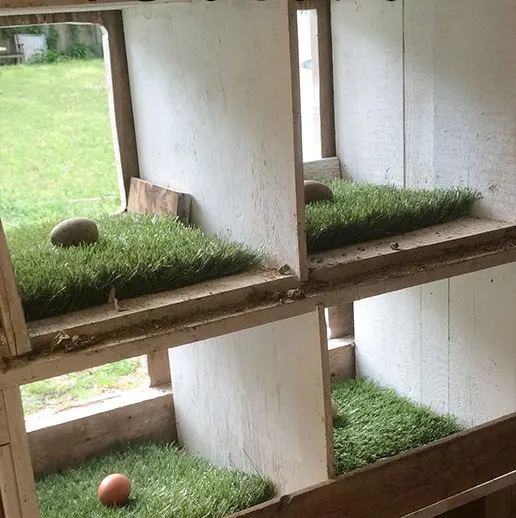
When I initially introduced the new synthetic bedding, the hens briefly revolted; however, placing wooden eggs* in the center of each newly bedded nest and blocking off the alternate area they were nesting in during their protest resulted in total success.
When I first penned this article, I’d been using the mats as nest liner for 8 weeks and was immediately pleased with the result. We were able to clean them easily by removing the mats and smacking them against the side of the coop like a rug. This removes the vast majority of debris.
The soft mats have completely ended egg-loss that had been caused by eggs bumping boards under scattered straw nesting material. I expect cleaning up tougher messes will involve just a brief soak in a bucket and hosing off (read on to learn more about how I routinely clean mine)
Supplies you’ll need to DIY your own Turf nesting box liners:
Winter 2022 Update: Great news, turf manufacturers have responded to the popularity of this DIY post and have now added precut 12.5×12.5″ turf nesting box liners at Amazon*!
These nesting box liners should fit pre-fab or standard scale nesting boxes, If you need to fit a non-standard nesting box- or just want to save a bit of money but cutting your own from a bulk strip of astroturf, click here to find the turf strips in the pile thickness I’ve tested*.
Here’s How I Made my Easy Clean Nesting Boxes:
I bought a 12″ x 48″ strip of astroturf* and cut it into squares sized to fit in my coop’s nesting boxes.
I hoped the thick pile would feel enough like natural grass that the chickens would adapt to it without needing additional nesting material:
First, I totally cleaned out my nesting boxes. Then I added a few strips of silicone caulking to the bottom of my new mats to add a non-slip grip to help keep the turf mats from slipping. I allowed the caulking to completely dry before adding the turf to the nesting boxes, since I did not want to glue the mats down, only provide traction.
Once the silicone was dry, I added the turf mats:
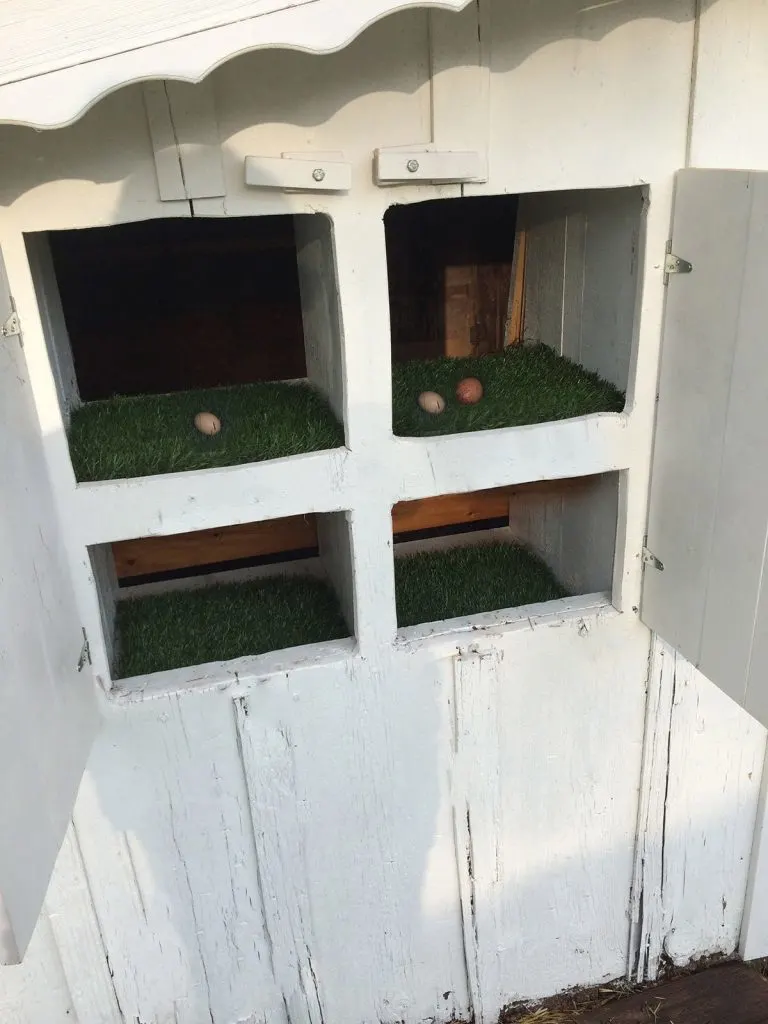
…And added a few wooden eggs for motivation. Here’s an interior view of my reach-through nesting boxes. My DIY nesting boxes are made from salvaged shipping crates. I just turned the crates on their side, removed the bottom of the crate and then cut a hole in the wall behind them. (For other shipping crate inspired DIYs, check out my Shipping Crate to Planter post)
Initially, my hens wanted to lay on top of the boxes, so the portion above the nesting boxes is filled tightly with crumpled chicken wire salvaged from another project:
Once I blocked off the alternate area above the nesting boxes, success was immediate! Almost immediately my hens began happily laying eggs in their astro-turf lined nesting boxes.
Aside from being easy to clean, I really like that this nesting medium makes it very easy to spot any droppings in the nest. Dirt and droppings tend to blend into a straw nest and often end up transferring to the eggshells. With the astroturf nest I can see right away when I need to pull a mat and shake it off, and my eggs are cleaner than ever.
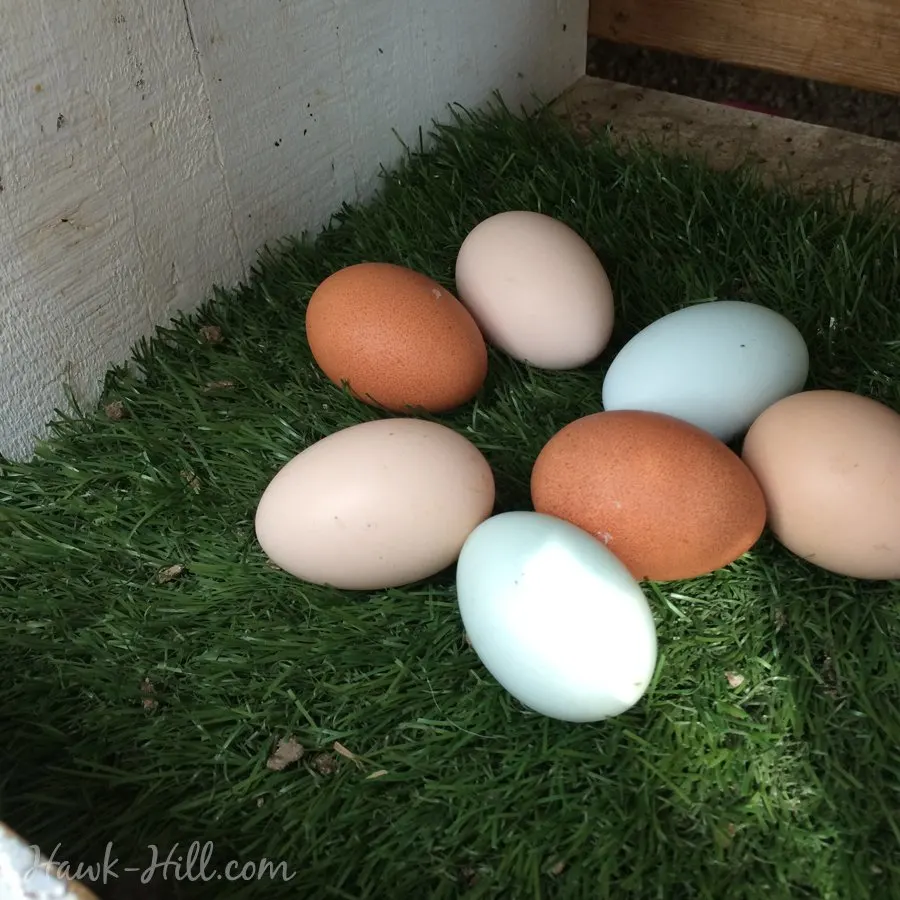
A Request:
This chicken-keeping tutorial saves money! If you sell your eggs for $4/dozen, and this tip saves even 1 egg per week from breaking, then this article saved you $19 over the next year!
Would you consider saying thanks by buying me a coffee or reviewing our partner’s offers so that the Hawk-Hill.com blog keeps rolling?
Update & How to Deep-Clean:
Years in, I still LOVE these liners! My hens have fully adapted to laying eggs on the astro-turf and I even had two chickens happily go broody on the artificial grass-lined nests last summer.
With two broody hens in attack-mode and several weeks of temperatures in the 100’s, I was not good about collecting eggs regularly last August. As a result, my turf nest liners ended up really dirty, with broken shells and rotten egg dried to the mat.
Although a gross cleanup job, it was a good opportunity to put these mats to the test. The Result? I was thrilled with how easily they cleaned up! Cleaning was simple and this method worked well:
1. I pulled mats out of nesting boxes and slapped them against the side of the coop to dislodge loose debris.
2. I then placed mats in a big bucket, filled the bucket with water, and splashed a generous portion of white vinegar on top (about 3 cups to my 10-gallon tub)
3. I left the mats to sit in vinegar-water for about 30 minutes.
4. After 30 minutes, I dumped the now-dirty vinegar water, refilled the bucket with clean water, sloshed mats around, and dumped. I repeated this rinse 3-4 times until water ran clear. The artificial grass was like a sponge to clean, so once the dried-on egg was soaked and soft, they cleaned up easily.
(For faster cleaning, you could also take the mats to a carwash and use the floor mat clips to hold while pressure washing the mats)
5. I think the mats could have gone back in the coop the same afternoon, but I left them on the coop’s roof to dry overnight and placed the artificial grass mats back in the nesting box the next morning.
Environmental Impact
A few of the comments below have been about the environmental impact of using astroturf nesting box liners vs traditional straw for lining nesting boxes. It’s an important point to consider, but I think at the end of the day it’s probably a wash due to the durability and reusability of the astroturf.
Straw, which is quickly scattered and requires replacement, is grown in fields that may require irrigation, harvest by heavy machinery, loading by often underpaid workers, and trucking to agricultural supply stores. A 12″ x 12″ square of Astroturf, although not biodegradable, works for years and years (I’m using the same mats now that I cut in 2013/2014) and because of that likely does not have a greater environmental impact than using straw.
Want more? Check out a tour of my renovated 100 year old chicken coop or my tutorial on how to get plants to grow in a chicken run.
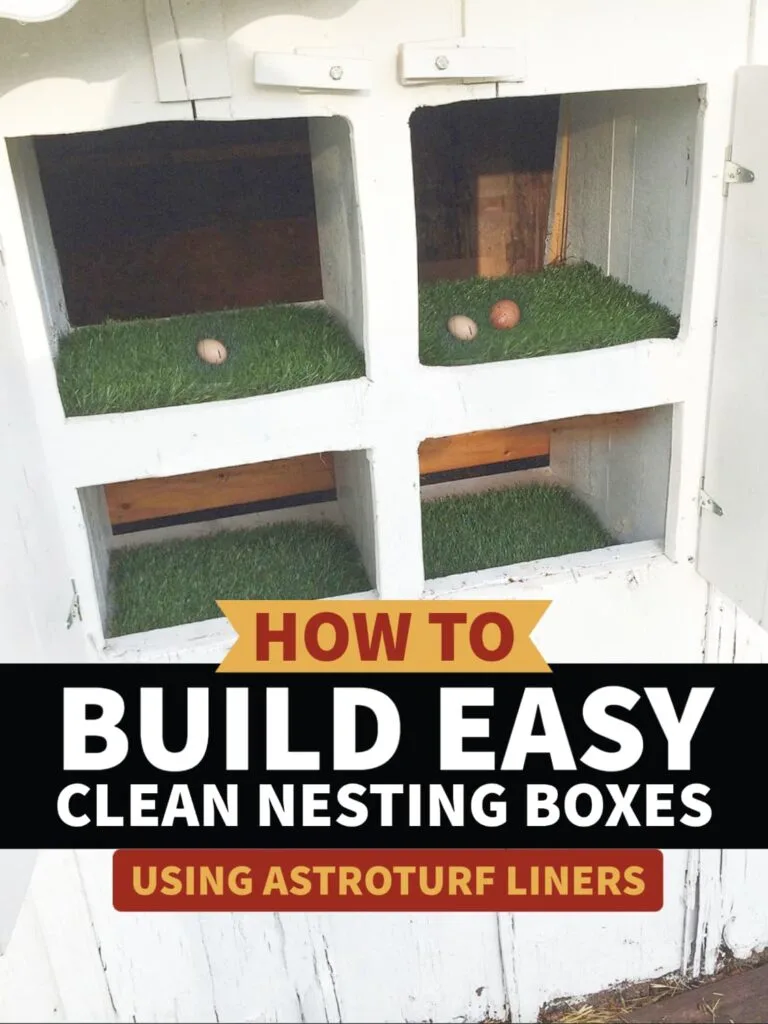
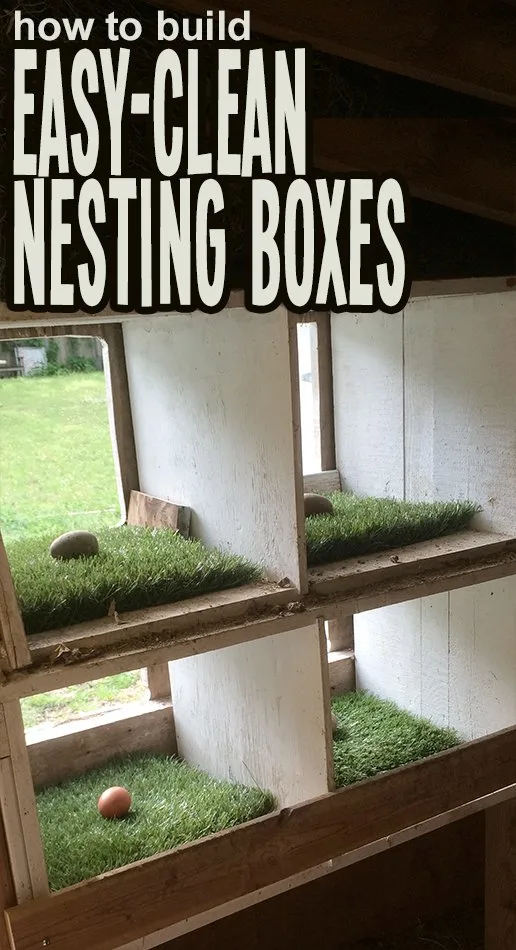

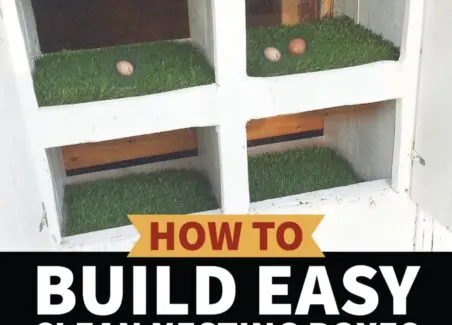
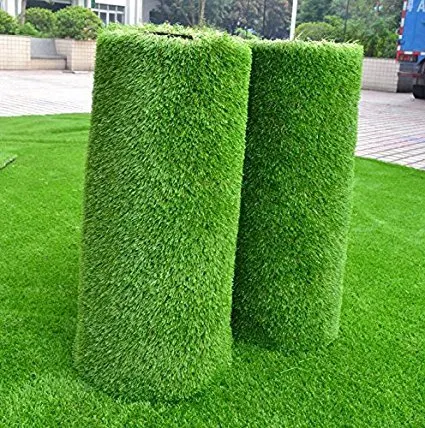
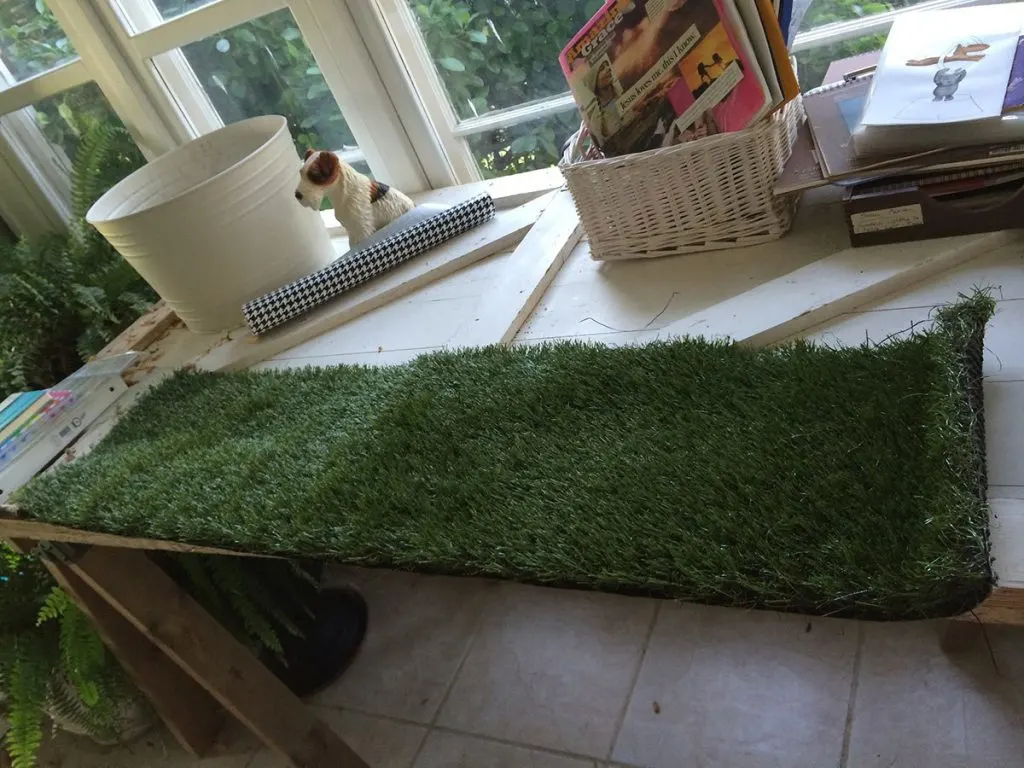
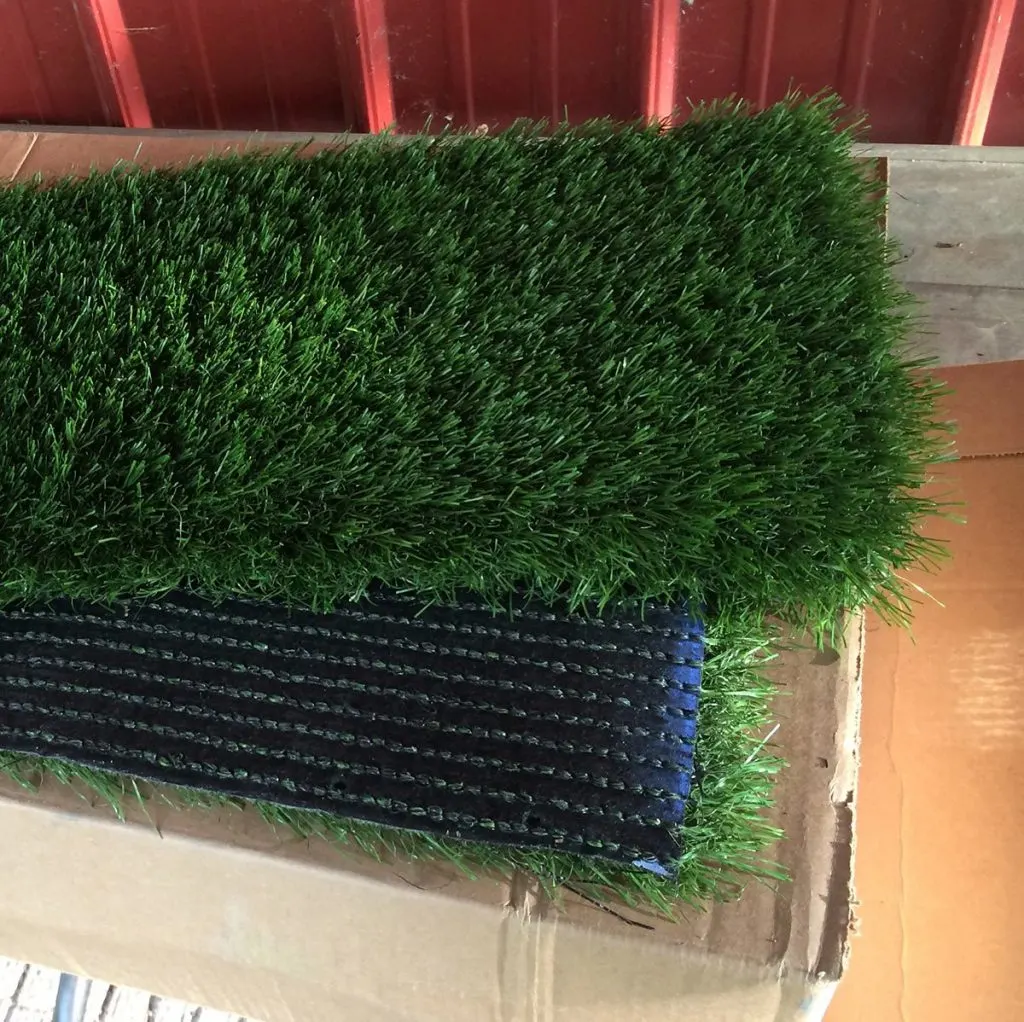
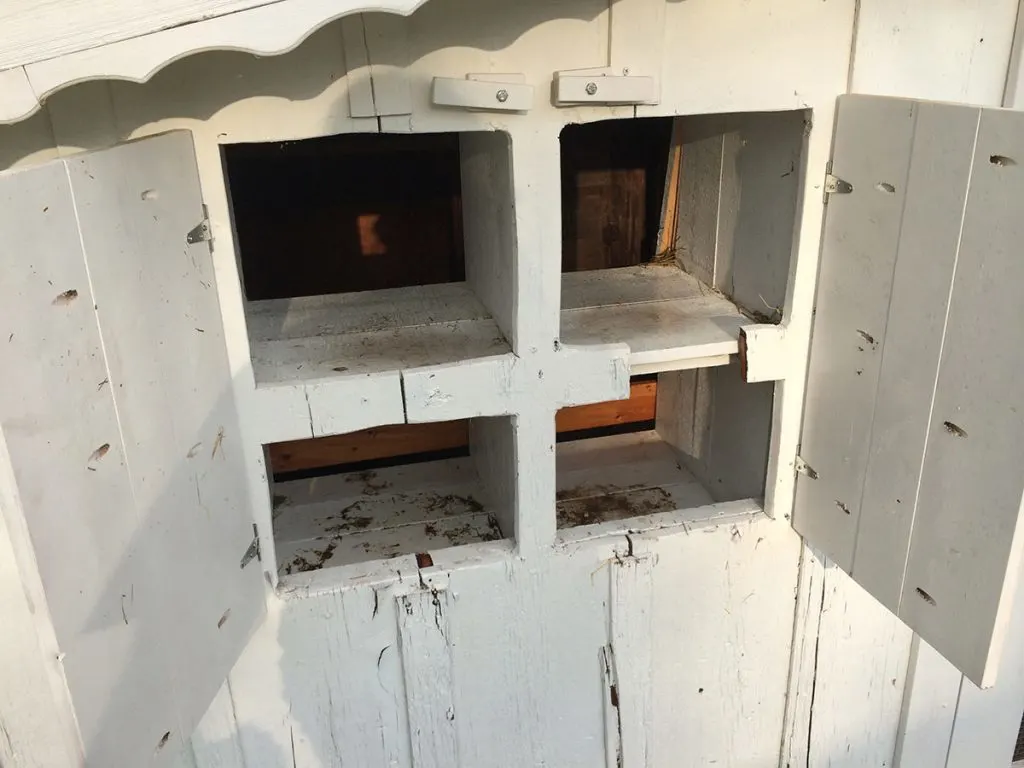
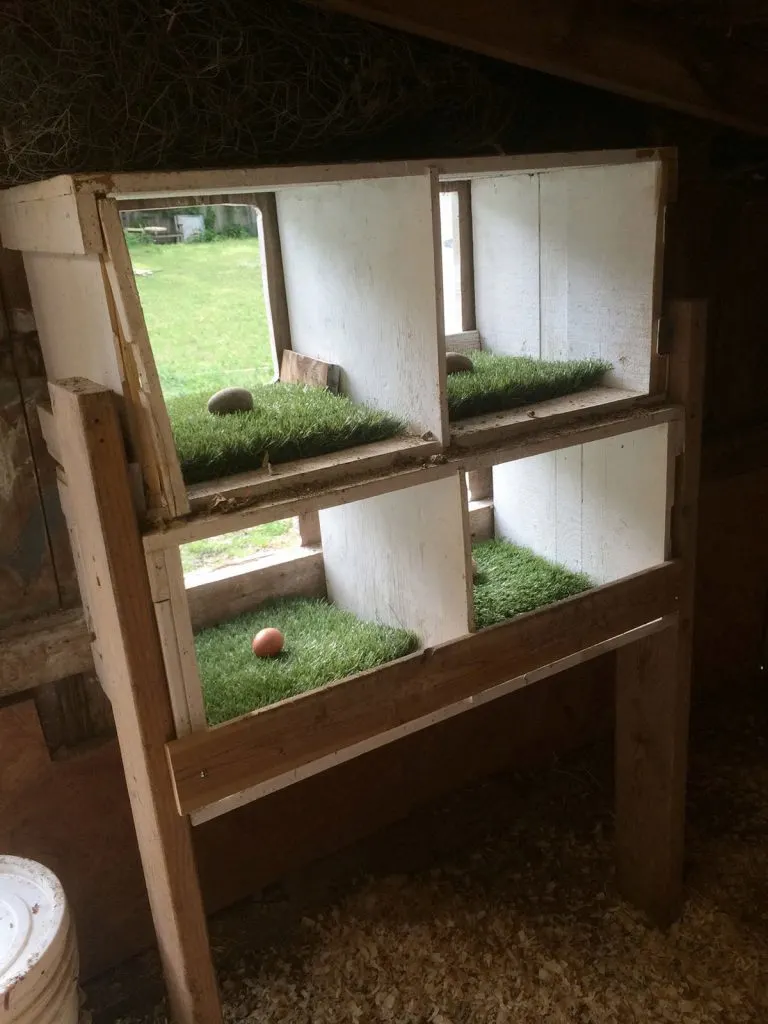
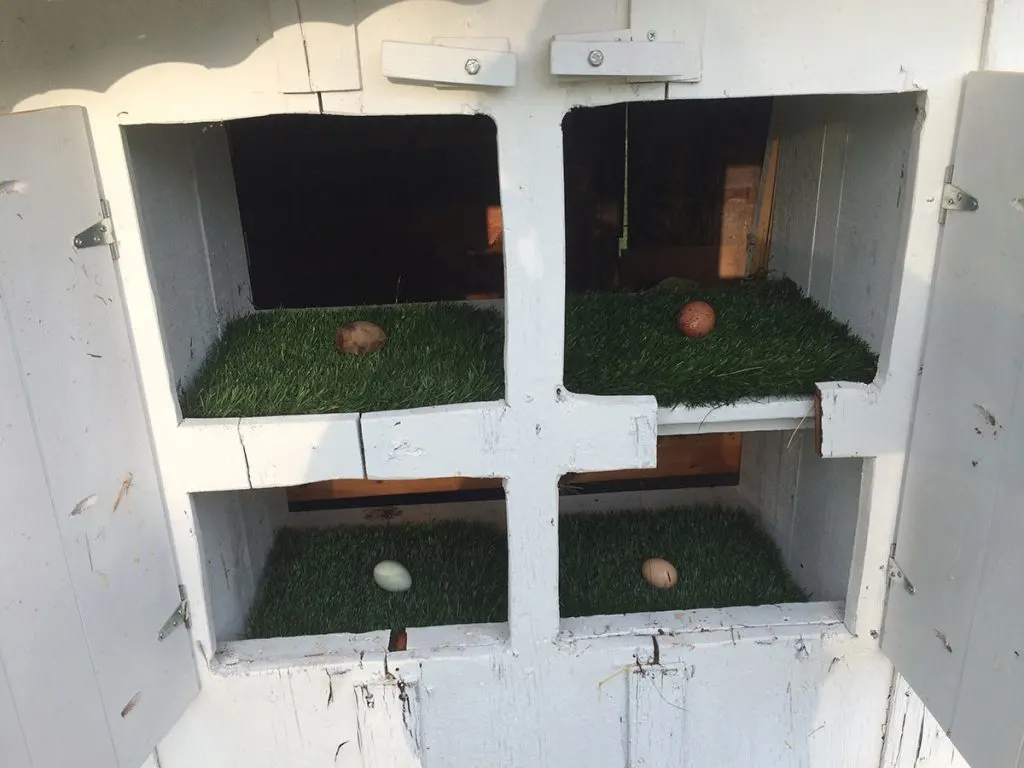
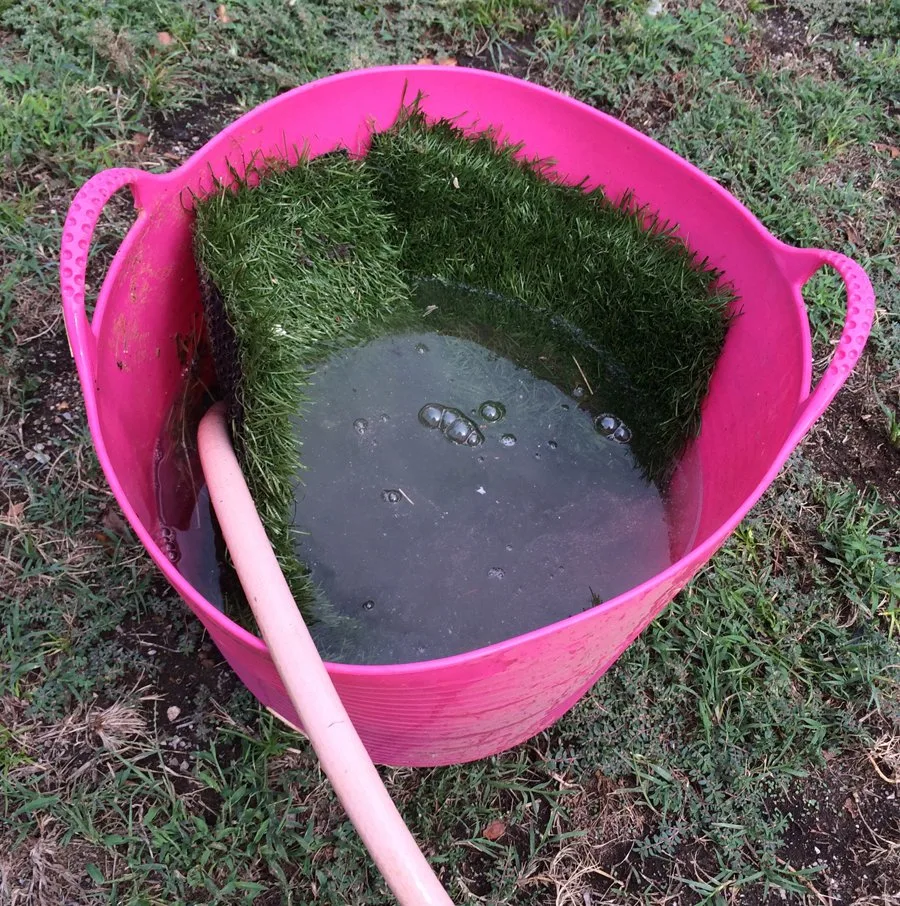
Hope Szabo
Friday 1st of March 2024
I am new to chicken growing. I saw a woman who used ground coffee bean on the floor. Dog poop scooper to clean poop out. My question. Could the coffee possibly deter bugs? I know it absorbs odors. Could I put it under the turf?
Lindsayanne Brenner
Friday 22nd of March 2024
I hear a bit about using ground coffee beans...nothing super definitive. It may deter some bugs...but possibly attract others...so I think it's a preference thing. Let me know about your experience and glad to hear you're on the chicken journey :]
Sandy Wilkinson
Saturday 5th of March 2022
Did the hens ever s ratch a hole in the astroturf or pull out the artificial grass?
Lindsayanne Brenner
Sunday 6th of March 2022
Hi Sandy, over time freeze/thaw cycles did more damage to my nesting mats than the hens did. This kind of turf, especially when it's new, is really sturdy and chickens learned quickly there was no use scratching.
Hilary Patterson
Saturday 21st of August 2021
I have had chickens for years now and have spent a fortune on bedding. I raise over 100 hens and clean 20 boxes several times a week. I am sooooo excited that I found this post and absolutely can't wait to see if this not only saves me a ton of money, but also works with my ladies.
Lori
Friday 4th of September 2020
I love the idea of using AstroTurf for bedding! My hens scratch and shove out every type of bedding I have tried. I can’t imagine why they want to sit on hard board! My question is what did you use to cut your turf with and was it hard to cut? Did you have problems with it unraveling? Thanks !! Lori B
Lindsayanne
Friday 4th of September 2020
Hi Lori! Thanks for reading- I hope this method works for you- it really is a great upgrade to my coop. The turf matt has a thin rubber-type backing, which you can carefully cut with a box cutter or even a good pair of scissors- just be sure to cut only the mat- not the blades of faux grass, or you'll end up with bits of grass everywhere! Because it's mounted on a matt- not woven together, unraveling isn't an issue. Good luck with your turf nesting boxes!
Cindy
Friday 17th of July 2020
Thank you for posting this!! I’ve been using the artificial turf in my girls’ boxes for the past 6 mos & it’s the best thing EVER!! Happy girls make happy eggs make happy mamma!!